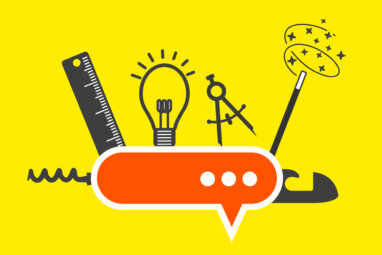How to Develop Continuous Learners
Leaders can help more employees upskill, reskill, and adapt to change by applying four key strategies.

Carolyn Geason-Beissel/MIT SMR | Getty Images
Amid the ever-increasing frequency and complexity of job changes and career transitions people experience, the notion of “one life, one career” has given rise to the phenomenon of a “portfolio career” that comprises a variety of roles. Education is also expected to shift from front-end loading early in life to continuous development throughout one’s work life.
Acquiring and developing new skills has never been more important than it is today, when organizations are quickly adapting in response to disruptive forces in geopolitics, climate change, and technology. The World Economic Forum estimates that 44% of core skills will change by 2027, necessitating widespread upskilling and reskilling. Similarly, PwC research shows that 79% of CEOs globally are concerned that skills shortages will hinder their company’s growth.
Despite the compelling pressure to engage in continuous learning, employees face formidable challenges in finding time and energy to pursue it. This results in inconsistent skill development that can be likened to a train that constantly sputters and halts. With an overwhelming laundry list of skills to develop — AI tools, data analytics, strategic thinking and leadership, and more — many employees are also unsure about which new skills they should prioritize. It also takes courage to explore new domains — to be naked in our ignorance as we start anew as beginners.
Developing Learning Agility
Learning agility is a process-oriented methodology rather than a content-focused learning skill like mind mapping or other memorization techniques. As we operate in increasingly uncertain times with no precedents, reliable formulas, or standard operating procedures, the ability to steer how we learn becomes critical in guiding us to find answers in novel situations.
Based on our research on learning agility, which included qualitative interviews with 24 career switchers and quantitative analyses of survey data from 340 professionals, we’ve identified the four elements that matter most in developing learning agility: linking purpose to learning, creating a learning-rich work environment, asking meta-learning questions, and nurturing a learning team.
Linking Purpose to Learning
Without motivation, there’s no battery power for learning. Our regression analyses showed that having a sense of purpose for learning predicts the successful development of skills and capabilities.





Comment (1)
Stuart Roehrl